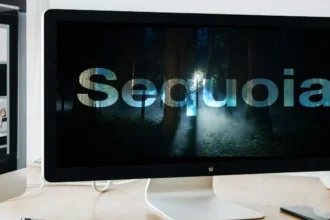However, NameDrop is one of the great innovation by Apple for its iPhone users to smarty share contact by bringing devices together, it also raised a concern as the Police warn parents about iOS 17’s NameDrop feature. This new feature has been added by Apple with the release of newer iOS 17 update.
While the update brings helpful new features like enhanced AI capabilities, one new addition called “NameDrop” has raised privacy concerns among law enforcement. Several police departments in Massachusetts have issued warnings to parents, advising them to disable NameDrop on their children’s devices.
What is NameDrop and How Does it Work?
The NameDrop feature allows iPhone users to easily share contact information by bringing two devices close together. When activated, a user can hold their phone near another iOS 17 device to transmit details like phone number, email address, social media profiles, and more.
This works through a technology called ultra wideband, which uses radio waves to sense proximity between devices. The feature only activates when two unlocked iPhones with iOS 17 are held within 10 centimeters of one another. Both users must consent before any data is shared.
Once contact information is exchanged, it is automatically saved into the recipient’s Contacts app. The idea behind NameDrop is to eliminate the need to manually type in long email addresses or phone numbers when exchanging details.
Concerns Over Child Safety and Privacy
While NameDrop provides a faster way to share information, police are warning that it may threaten child safety and privacy. The ease of sharing personal data could let predators easily obtain contact information from minors. Kids may also inadvertently activate the feature without understanding they are transmitting private details.
Additionally, there are general concerns over how secure and private the NameDrop system is. Despite safeguards like user consent prompts, bugs or flaws could potentially allow unauthorized access to personal data. Attackers could also exploit the wireless technology to intercept shared information.
Police Advise Disabling Feature for Child Devices
Due to these risks, Massachusetts law enforcement discourages using NameDrop on children’s devices. Most smartphones used by kids under 18 are handed down from parents already running iOS 17.
Police advise navigating to Settings > General > AirDrop and disabling the “Bringing Devices Together” option. This turns off the NameDrop feature entirely, preventing contact sharing via ultra wideband.
Authorities note that disabling NameDrop does not affect most other iOS or app functionalities. Turning it off removes the privacy risks without significantly degrading the user experience. Parents are still encouraged to monitor children’s overall phone usage regardless.
Perspectives on Whether Concerns Are Valid
Opinions diverge on whether the NameDrop warnings are exaggerated. Supporters of the police advisory argue that any potential breach of kids’ privacy necessitates caution. The simplicity of sharing personal information also worries parents.
However, others claim the privacy risks are overblown. They argue NameDrop has security safeguards like consent prompts, and requires very close physical proximity to activate. Critics of the warning believe attackers have easier ways to access data than exploiting NameDrop.
Key Takeaways
The NameDrop debate highlights the constant balance between convenience and privacy. While iOS 17’s instant contact sharing capability has its benefits, the risks prompt increased diligence from law enforcement and parents.
Disabling NameDrop on child devices removes potential issues, but users can choose to keep using the feature while understanding its privacy implications. As with any new technology, conscious assessment of its advantages and disadvantages is vital.
Conclusion
NameDrop delivers helpful instant sharing, but has raised logical worries among parents and police. While the privacy risks may well prove manageable, disabling the tool for kids enables precaution without significantly limiting device usability. Users can also monitor general phone usage, set sharing restrictions, and keep devices updated to maximize online child safety.






